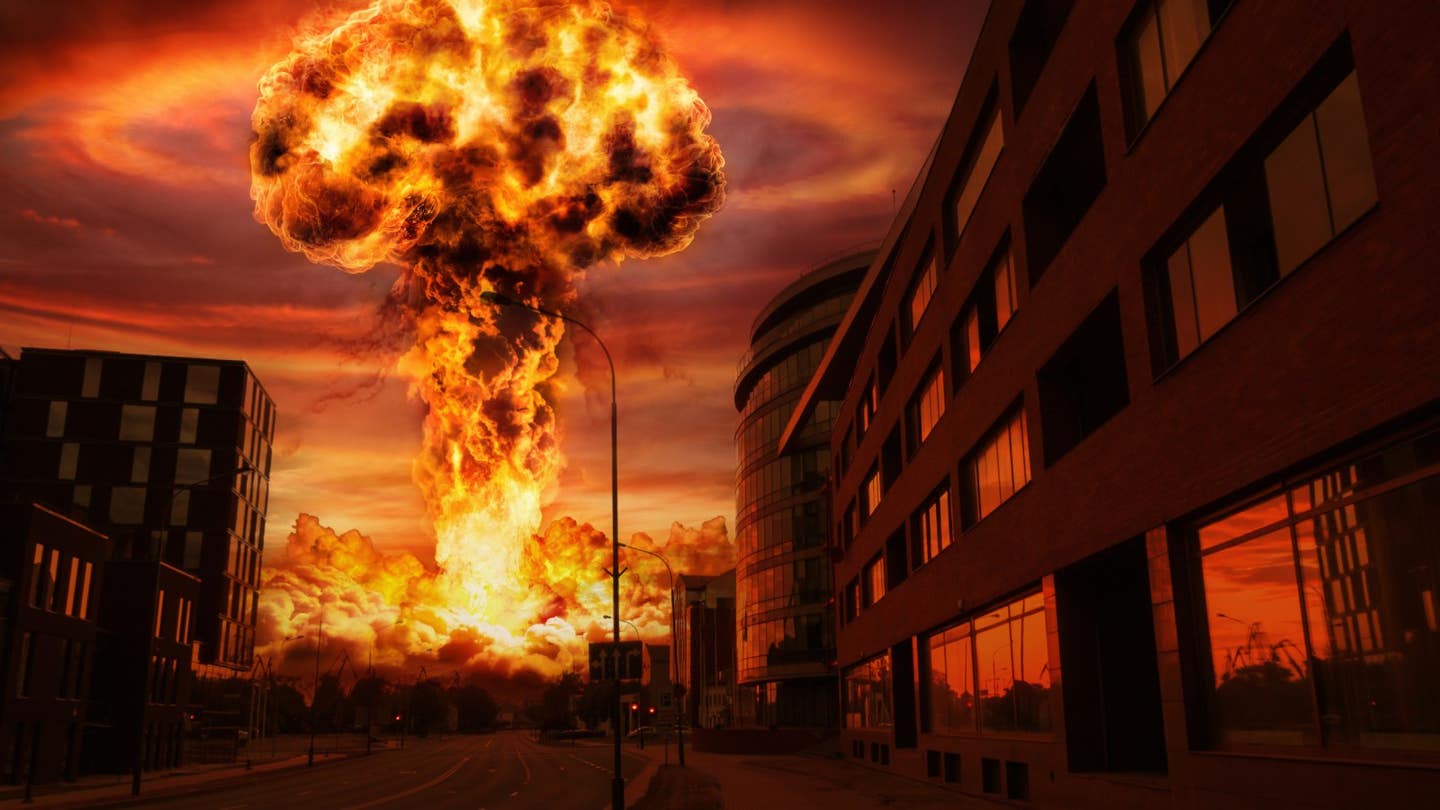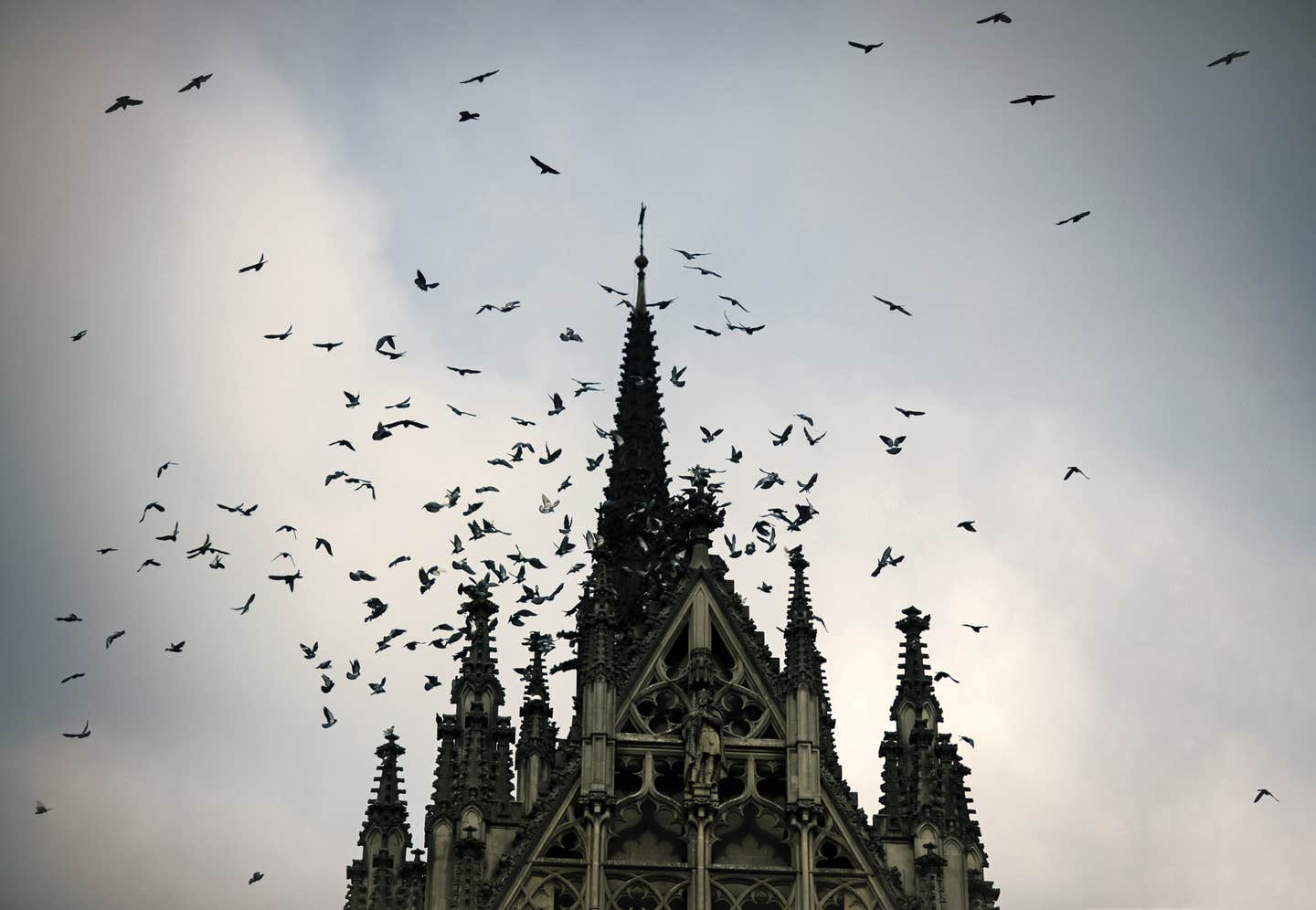This is the safest place to hide when a nuclear bomb strikes
In buildings that remain standing beyond the blast’s epicenter, the threat shifts from collapsing structures to something less visible but still deadly.

Researchers have taken a hard look at what happens to people who shelter inside buildings within the so-called moderate damage zone (MDZ). (CREDIT: iStock / Getty Images Plus)
When a nuclear bomb detonates, the devastation is immediate and terrifying. But outside the area of total destruction, the dangers don’t vanish—they change. In buildings that remain standing beyond the blast's epicenter, the threat shifts from collapsing structures to something less visible but still deadly: high-speed air currents created by the blast wave.
Researchers from the University of Nicosia have taken a hard look at what happens to people who shelter inside buildings within the so-called moderate damage zone (MDZ). Their goal was to understand how these fast-moving indoor airflows affect human safety, especially since such data could help reduce casualties if the unthinkable happens.
Using simulations based on a 750-kiloton nuclear warhead—similar in size to Russia’s RS-28 Sarmat, also known as Satan II—they explored how the blast wave behaves inside concrete-reinforced structures.
Their findings, published in Physics of Fluids by AIP Publishing, paint a chilling picture. Even in buildings that don’t collapse, the airflows created by the blast can become strong enough to lift people off the ground, throw them into walls, and cause serious injuries or death.
The Real Danger Inside Buildings
When a nuclear bomb explodes, three main forces are unleashed: the blast wave, thermal radiation, and ionizing radiation. Each one causes a different type of destruction, but the blast wave is responsible for most of the physical damage to structures and people. It travels as a high-pressure shock wave through the air, smashing everything in its path.
The damage caused by this wave depends on two main factors: the strength of the explosion and how high above the ground it occurs. Air bursts—explosions that happen in the sky—create strong overpressures that can reach far from the detonation point. Surface explosions, on the other hand, cause stronger damage close to the ground but over a shorter distance.
Overpressures above 20 pounds per square inch (psi) will crush even heavy concrete buildings. At 10 psi, nearly everyone in the area dies. At 5 psi, there’s widespread injury and major structural damage. At 3 psi, smaller buildings collapse and people still suffer serious injuries. Even at these lower levels, people caught outdoors face extreme danger not just from the blast wave itself but also from flying debris and radiation.
Related Stories
Shelter Isn’t Always Safe
While being inside a concrete building within the MDZ offers better protection than being outside, it's no guarantee of safety. The study showed that once the blast wave enters a building through openings like windows or doors, it accelerates and intensifies. Air speeds indoors can actually increase due to the way the blast is funneled through narrow corridors and around walls and furniture.
For their analysis, the researchers modeled a typical building interior with rooms, doorways, and a central corridor. They studied the effects of blast waves with overpressures of 3 and 5 psi—levels that most concrete buildings can survive. But what they found was alarming. Even at these “moderate” blast levels, the winds inside could reach speeds high enough to slam a person into a wall with force equivalent to 18 times their body weight.
Dimitris Drikakis, one of the lead researchers, explained the urgency behind the study. “Before our study, the danger to people inside a concrete-reinforced building that withstands the blast wave was unclear,” he said. “Our study shows that high airspeeds remain a considerable hazard and can still result in severe injuries or even fatalities.”
The Role of Indoor Airflow
Once the blast wave hits a building, it doesn’t just stop at the windows. Supersonic shock waves rush in and expand, channeling through open doorways and hallways. Most of the airflow gets funneled into corridors instead of continuing straight into opposite rooms. This channeling effect leads to even higher airspeeds down hallways and in adjacent rooms. The researchers found that specific areas inside a room, especially those further down a corridor, experienced the fastest and most dangerous gusts.
Ioannis Kokkinakis, another key contributor to the study, added, “The most dangerous critical indoor locations to avoid are the windows, the corridors, and the doors. People should stay away from these locations and immediately take shelter. Even in the front room facing the explosion, one can be safe from the high airspeeds if positioned at the corners of the wall facing the blast.”
The study helps identify these safer zones inside buildings. Taking shelter behind thick walls and away from doors, windows, and hallways greatly increases the chance of surviving the initial blast wave.
Seconds Matter
The blast wave from a nuclear detonation travels fast. In many cases, it reaches buildings within a few seconds of the explosion. This leaves almost no time for people to react. That’s why understanding what to do in advance is so critical.
If you're in a city or area that could become a target, knowing the safest spots inside a building could mean the difference between life and death. The advice is simple but crucial: stay away from windows and doors, avoid hallways, and find shelter behind walls—ideally in a corner that doesn’t face any openings.
The danger doesn’t end with the blast wave. People must also watch out for falling debris, fires, ruptured gas lines, and increased levels of radiation. Emergency responders may take time to arrive, and damage to communication lines could delay rescue efforts.
A Chilling Reminder
Tactical nuclear weapons, which range between 5 and 15 kilotons, are far smaller than the 750-kiloton warhead modeled in this study. But the fact that such powerful warheads exist—and that global tensions are rising—makes the findings impossible to ignore.
While the researchers stress that they hope their results never need to be used, their work serves as a warning. The world must prepare for even the most unlikely scenarios. Scientific studies like this one provide crucial information that could save lives if a nuclear attack were ever to happen.
Being inside a building is better than being outside—but only if you know where to take cover. The right information, known ahead of time, can make all the difference in the seconds following a nuclear blast.
The article "Nuclear explosion impact on humans indoors" is authored by Ioannis William Kokkinakis and Dimitris Drikakis.
Note: Materials provided above by The Brighter Side of News. Content may be edited for style and length.
Like these kind of feel good stories? Get The Brighter Side of News' newsletter.



